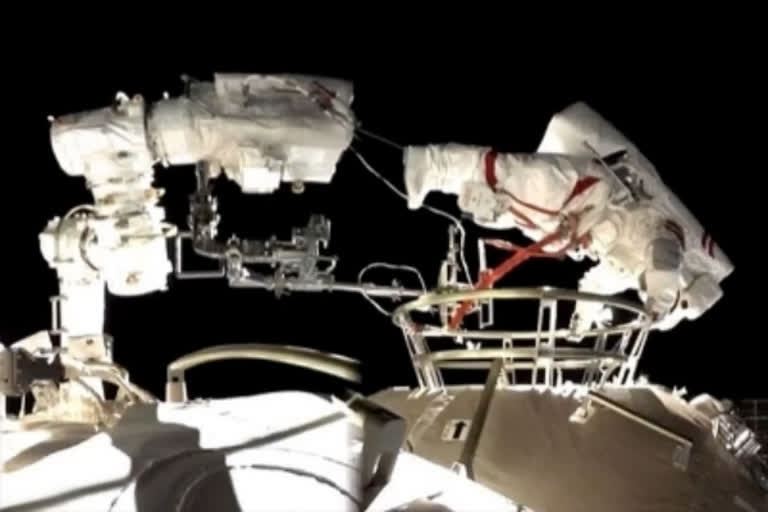Beijing: China's T-shaped Tiangong (Heavenly Palace) space station, which is yet to be completed, aims to host more than 1,000 experiments, from dark matter and gravitational waves to the growth of cancer and pathogenic bacteria, Nature reported.
In April, China sent into space the core module of its space station, kicking off a series of key launch missions that aim to complete the construction of the station by the end of 2022.
In late May, a cargo ship named Tianzhou-2 (Heavenly Ship) was sent up and docked, delivering fuel, space suits and experimental equipment. In June, three Chinese astronauts aboard Shenzhou-12 also docked, entering the 17-metre-long chamber that will be their home for the next three months.
In the coming year, the China Manned Space Agency (CMSA) will send another eight missions to Tiangong. Two will deliver the Wentian (Quest for Heavens) and Mengtian (Dreaming of Heavens) modules, which will mainly house scientific experiments, the report said.
Read: Ladakh row: India presses for early resolution of remaining issues
These will be "the playrooms of scientists", Paulo de Souza, a physicist at Griffith University in Brisbane, Australia, was quoted as saying. Further, the Tiangong will have more than 20 experimental racks, which are mini-labs with closed, pressurised environments, added Yang Yang, director of international cooperation at the CAS Technology and Engineering Center for Space Utilization in Beijing.
Outside, there will be 67 connection points for research hardware facing Earth or the sky, and a powerful central computer will process data from experiments before beaming them back to Earth, Yang noted. The country had previously launched two small space labs -- Tiangong-1 and Tiangong-2 -- which hosted more than 100 experiments. But they are no longer in orbit.
Tiangong offers brand new facilities, and China is encouraging experiments not attempted in space before, Tricia Larose, a medical researcher at the University of Oslo, who is leading a project planned for 2026, was quoted as saying.
"They're saying, yes, build your hardware, make it brand new, do something that has never been done before, and send it up to us," Larose said. Although most experiments slated for Tiangong will involve Chinese researchers, China says that its space station will be open to collaboration from all countries, including the United States.
IANS



